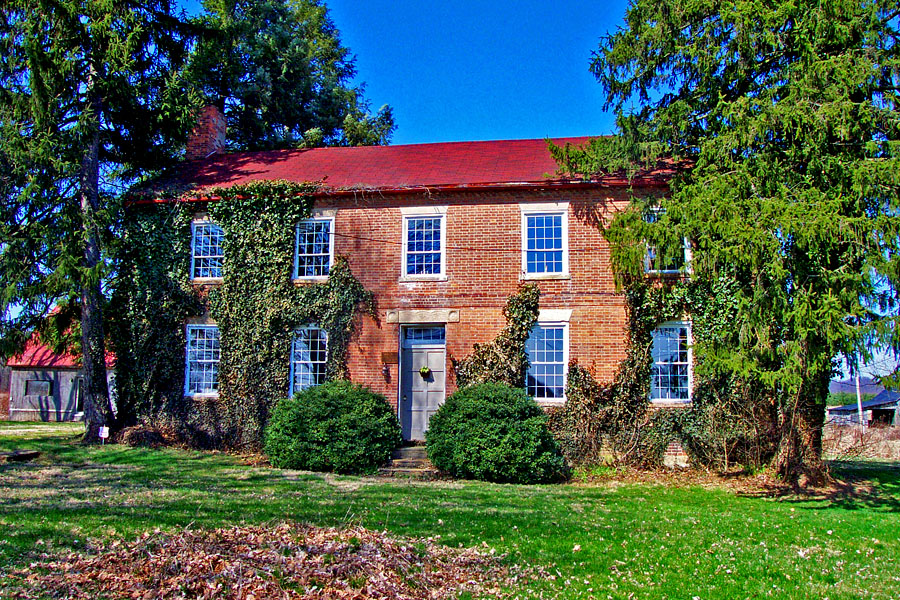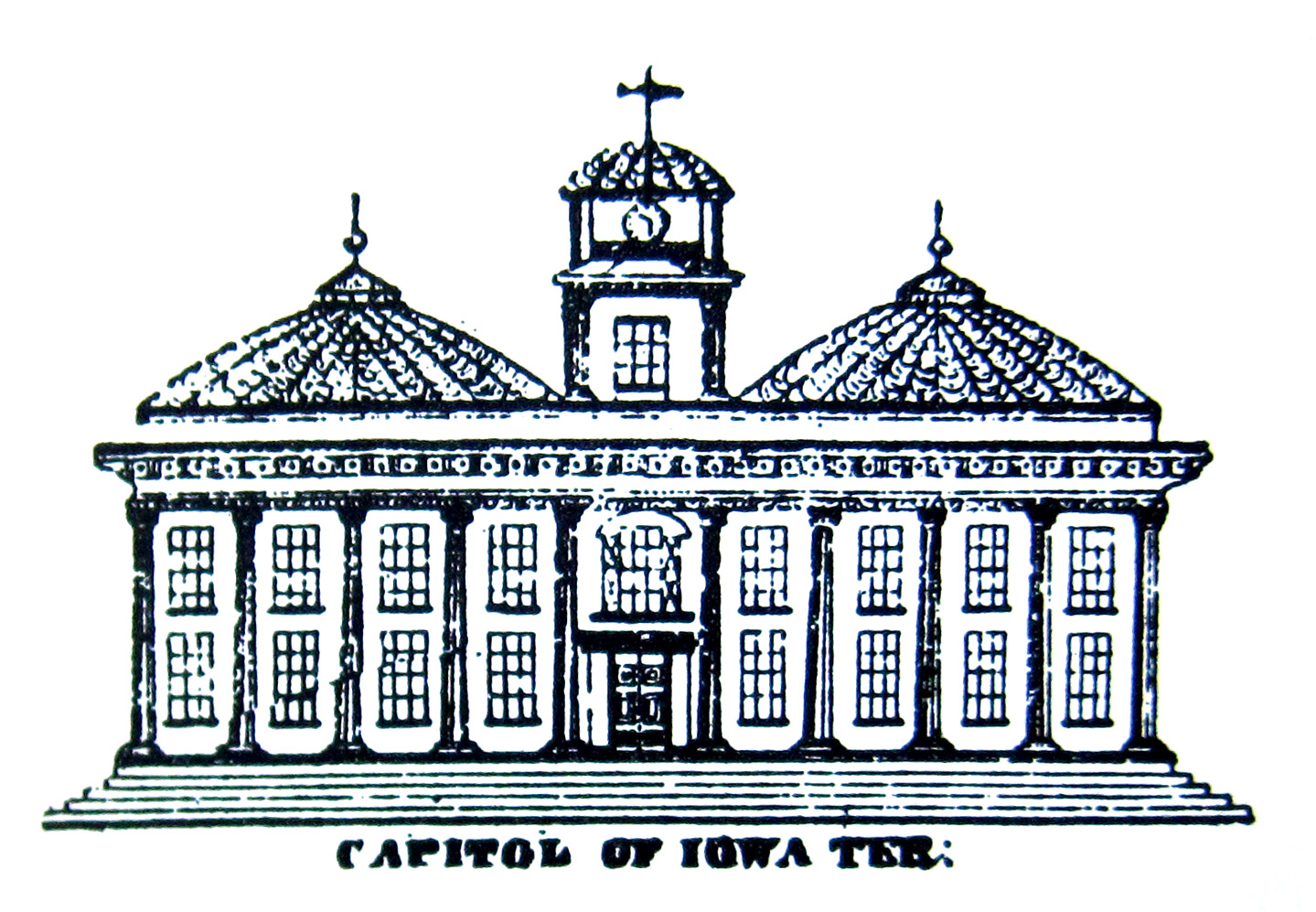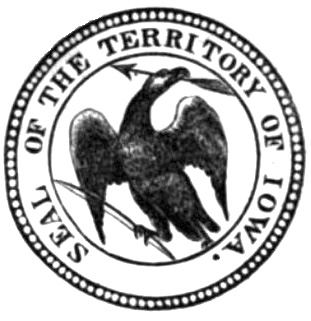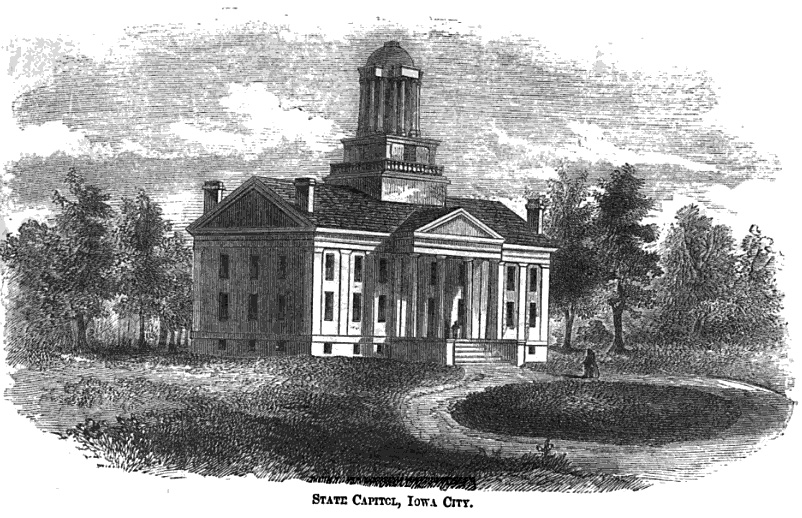|
Iowa City, Iowa
Iowa City is the largest city in Johnson County, Iowa, United States, and its county seat. At the time of the 2020 United States census, 2020 census the population was 74,828, making it the state's List of cities in Iowa, fifth-most populous city. The Iowa City metropolitan area, which encompasses Johnson and Washington County, Iowa, Washington counties, has a population of over 171,000. The metro area is also a part of a combined statistical area with the Cedar Rapids, Iowa, Cedar Rapids metro area known as the Iowa City-Cedar Rapids region which collectively has a population of nearly 500,000. Iowa City is the home of the University of Iowa. It was the second capital of the Iowa Territory and the first capital city of the State of Iowa; the Iowa Old Capitol Building, Old Capitol building is a National Historic Landmark in the center of the University of Iowa campus. The University of Iowa Art Museum and Plum Grove Historic House, Plum Grove, the home of the first governor of ... [...More Info...] [...Related Items...] OR: [Wikipedia] [Google] [Baidu] |
List Of Cities In Iowa
Iowa is a U.S. state, state located in the Midwestern United States. As of 2010, there are 943 incorporated place, incorporated Local government in the United States, cities in the U.S. state of Iowa. According to the 2020 United States census, 2020 United States Census, Iowa has 3,190,369 inhabitants and of land. Iowa is divided into 99 List of counties in Iowa, counties and has 943 cities. Every incorporated place in Iowa is called a "city", regardless of population. Incorporated cities can choose one of six forms of municipal government that differ primarily on how the legislative and administrative responsibilities are separated: mayor-council, mayor-council with an appointed manager, council-manager-at-large, commission, council-manager-ward, home rule charter or special charter. Most operate as mayor–council government, mayor–council. According to the 2020 Census, 2,014,831 of Iowa's 3,190,369 residents lived in urban areas, accounting for 63.1% of the population. The ... [...More Info...] [...Related Items...] OR: [Wikipedia] [Google] [Baidu] |
North American Numbering Plan
The North American Numbering Plan (NANP) is an integrated telephone numbering plan for twenty-five regions in twenty countries, primarily in North America and the Caribbean. This group is historically known as World Zone 1, World Numbering Zone 1 and has the telephone country code, country code ''1''. Some North American countries, most notably Telephone numbers in Mexico, Mexico, do not participate in the NANP. The concepts of the NANP were devised originally during the 1940s by the American Telephone and Telegraph Company (AT&T) for the Bell System and the independent telephone companies in North America in Operator Toll Dialing. The first task was to unify the diverse local telephone numbering plans that had been established during the preceding decades, with the goal to speed call completion times and decrease the costs for long-distance calling, by reducing manual labor by switchboard operators. Eventually, it prepared the continent for direct-dialing of long-distance calls ... [...More Info...] [...Related Items...] OR: [Wikipedia] [Google] [Baidu] |
Robert Lucas (governor)
Robert Lucas (April 1, 1781February 7, 1853) was the 12th governor of Ohio, serving from 1832 to 1836. He later served as the first governor of the Iowa Territory from 1838 to 1841. Lucas was a central figure in the Toledo War and the Honey War. Early life Lucas was born in 1781 in what was then Mecklenburg, Virginia (his birthplace's location in modern times is known as Shepherdstown, West Virginia). He was the son of William Lucas and Susannah Barnes. Lucas came from a Quakers, Quaker family whose roots stretched back to 1679 in Pennsylvania, though the family had recently moved to Virginia. Lucas' father, an American Revolutionary War veteran, owned Slavery in the United States, enslaved people and large amounts of land. According to family legend, Robert's uncle, Joseph Barnes, built a steam-powered boat long before Robert Fulton, Fulton's invention. Robert received some early schooling in mathematics and surveying, skills that would prove invaluable to his future work.Paris ... [...More Info...] [...Related Items...] OR: [Wikipedia] [Google] [Baidu] |
Plum Grove Historic House
Plum Grove is a historic house located in Iowa City, United States. Plum Grove was the retirement home of Gov. Robert Lucas and the childhood home of the author Eleanor Hoyt Brainerd. History Built in 1844, Robert Lucas lived in the house with his wife, Friendly, and several children and grandchildren. Lucas died at Plum Grove in 1853, and his family moved out by 1866. Subsequent owners include the Hoyt family, who were associated with the Eleutherian College, and Plum Grove was the birthplace of Eleanor Hoyt Brainerd in 1868. The house was subsequently occupied by the family of Jacob Carroll Switzer, a Civil War hero, and then by a number of immigrant and impoverished families. It was bought by the state of Iowa in 1943 and refurbished as a monument to Lucas. The house is currently maintained by the Johnson County Historical Society, but owned by the State Historical Society of Iowa. The house is open for tours Memorial Day through Labor Day on Wednesdays through Sunda ... [...More Info...] [...Related Items...] OR: [Wikipedia] [Google] [Baidu] |
National Historic Landmark
A National Historic Landmark (NHL) is a National Register of Historic Places property types, building, district, object, site, or structure that is officially recognized by the Federal government of the United States, United States government for its outstanding historical significance. Only some 2,500, or roughly three percent, of over 90,000 places listed on the country's National Register of Historic Places (NRHP) are recognized as National Historic Landmarks. A National Historic Landmark District may include many contributing properties that are buildings, structures, sites or objects, and it may also include non-contributing properties. Contributing properties may or may not also be separately listed as NHLs or on the NRHP. History The origins of the first National Historic Landmark was a simple cedar post, placed by the Lewis and Clark Expedition on their 1804 outbound trek to the Pacific Ocean in commemoration of the death from natural causes of Sergeant Charles Floyd (e ... [...More Info...] [...Related Items...] OR: [Wikipedia] [Google] [Baidu] |
Iowa Old Capitol Building
The Iowa Old Capitol Building is located in Iowa City, Iowa, United States. It was once the main government building for the state of Iowa, and it now stands as the most prominent landmark at the center of the University of Iowa's campus. The building was depicted on the 1946 Iowa Centennial commemorative half dollar. It was individually listed in the National Register of Historic Places (NRHP) in 1972, and it was named a U.S. National Historic Landmark in 1976. In 1978 it was included as a contributing property in the Pentacrest, a historic district listed on the NRHP. Government building John F. Rague is credited with designing the Territorial Capitol Building, although it is thought that missionary priest Father Samuel Mazzuchelli helped with the design also. Rague had previously designed the 1837 capitol of Illinois and was supervising its construction when he got the commission to design the new Iowa capitol in 1839. He quit the Iowa project after five months, claimi ... [...More Info...] [...Related Items...] OR: [Wikipedia] [Google] [Baidu] |
Iowa Territory
The Territory of Iowa was an organized incorporated territory of the United States that existed from July 4, 1838, until December 28, 1846, when the southeastern portion of the territory was admitted to the Union as the state of Iowa. The remainder of the territory would have no organized territorial government until the Minnesota Territory was organized on March 3, 1849. History Most of the area in the territory was originally part of the Louisiana Purchase and was a part of the Missouri Territory. When Missouri became a state in 1821, this area (along with the Dakotas) effectively became unorganized territory. The area was closed to white settlers until the 1830s, after the Black Hawk War ended. It was attached to the Michigan Territory on June 28, 1834. At an extra session of the Sixth Legislative Assembly of Michigan held in September, 1834, the Iowa District was divided into two counties by running a line due west from the lower end of Rock Island in the Mississippi R ... [...More Info...] [...Related Items...] OR: [Wikipedia] [Google] [Baidu] |
University Of Iowa
The University of Iowa (U of I, UIowa, or Iowa) is a public university, public research university in Iowa City, Iowa, United States. Founded in 1847, it is the oldest and largest university in the state. The University of Iowa is organized into 12 colleges offering more than 200 areas of study and 7 professional degrees. On an urban 1,880-acre campus on the banks of the Iowa River, the University of Iowa is Carnegie Classification of Institutions of Higher Education, classified among "R1: Doctoral Universities – Very high research activity". In fiscal year 2021, research expenditures at Iowa totaled $818 million. The university was the original developer of the Master of Fine Arts degree, and it operates the Iowa Writers' Workshop, whose alumni include 17 of the university's 46 Pulitzer Prize winners. Iowa is a member of the Association of American Universities and the Universities Research Association. Among public universities in the United States, UI was the first to beco ... [...More Info...] [...Related Items...] OR: [Wikipedia] [Google] [Baidu] |
Cedar Rapids, Iowa
Cedar Rapids is a city in Linn County, Iowa, United States, and its county seat. The population was 137,710 at the 2020 United States census, 2020 census, making it the List of cities in Iowa, second-most populous city in Iowa. The city lies on both banks of the Cedar River (Iowa River), Cedar River, north of Iowa City, Iowa, Iowa City and northeast of Des Moines, Iowa, Des Moines, the state's capital. Cedar Rapids is the economic hub of Eastern Iowa, located at the core of the Interstate 380 (Iowa), Interstate 380 corridor. The population of the three-county Cedar Rapids metropolitan area, Iowa, Cedar Rapids metropolitan area, which includes the nearby cities of Marion, Iowa, Marion and Hiawatha, Iowa, Hiawatha, was 276,520 in 2020. The Cedar Rapids metropolitan area is also part of a combined statistical area with the Iowa City metropolitan area. History Early history The location of present-day Cedar Rapids was in the territory of the Meskwaki and Sauk people, Sauk peo ... [...More Info...] [...Related Items...] OR: [Wikipedia] [Google] [Baidu] |
Washington County, Iowa
Washington County is a county located in the U.S. state of Iowa. As of the 2020 census, the population was 22,565. The county seat is Washington. Washington County is included in the Iowa City metropolitan area. History Washington County was originally formed in 1838 as Slaughter County in honor of William B. Slaughter, the secretary of Wisconsin Territory. The county, still named Slaughter County, became part of Iowa Territory on July 4, 1838, when it was organized. To honor George Washington, the county opted to change its name on January 25, 1839. The first White American colonizers arrived in Washington County in 1835, and began establishing individual domiciles in 1836. A settlement, Astoria, was built in the present township of Oregon; it became the first county seat and housed the first court house. The county seat was moved to the city of Washington in 1839. The first religious society, organized by Reverend J.L. Kirkpatrick, a Methodist minister was created in 1839. ... [...More Info...] [...Related Items...] OR: [Wikipedia] [Google] [Baidu] |
Iowa City Metropolitan Area
The Iowa City Metropolitan Statistical Area, as defined by the United States Census Bureau, is an area consisting of two counties in Iowa anchored by the city of Iowa City. The Metropolitan Statistical Area (MSA) had a population of 182,711 people in the 2024 US Census Bureau population estimate. growing 4.16% compared to 2020. The Iowa City Metropolitan Statistical Area (MSA) is also a part of a Combined Statistical Area (CSA) with the nearby Cedar Rapids Metropolitan Statistical Area (MSA). This CSA plus two additional counties are known as the Iowa City-Cedar Rapids (ICR) region and collectively have a population of nearly 500,000. Counties Johnson and Washington make up the Iowa City metropolitan area with Johnson County being the second fastest growing county in Iowa. Communities *Places with more than 50,000 inhabitants **Iowa City (Principal city) *Places with 5,000 to 50,000 inhabitants ** Coralville ** North Liberty, at 20%, fastest growing city in Johnson County (2 ... [...More Info...] [...Related Items...] OR: [Wikipedia] [Google] [Baidu] |







